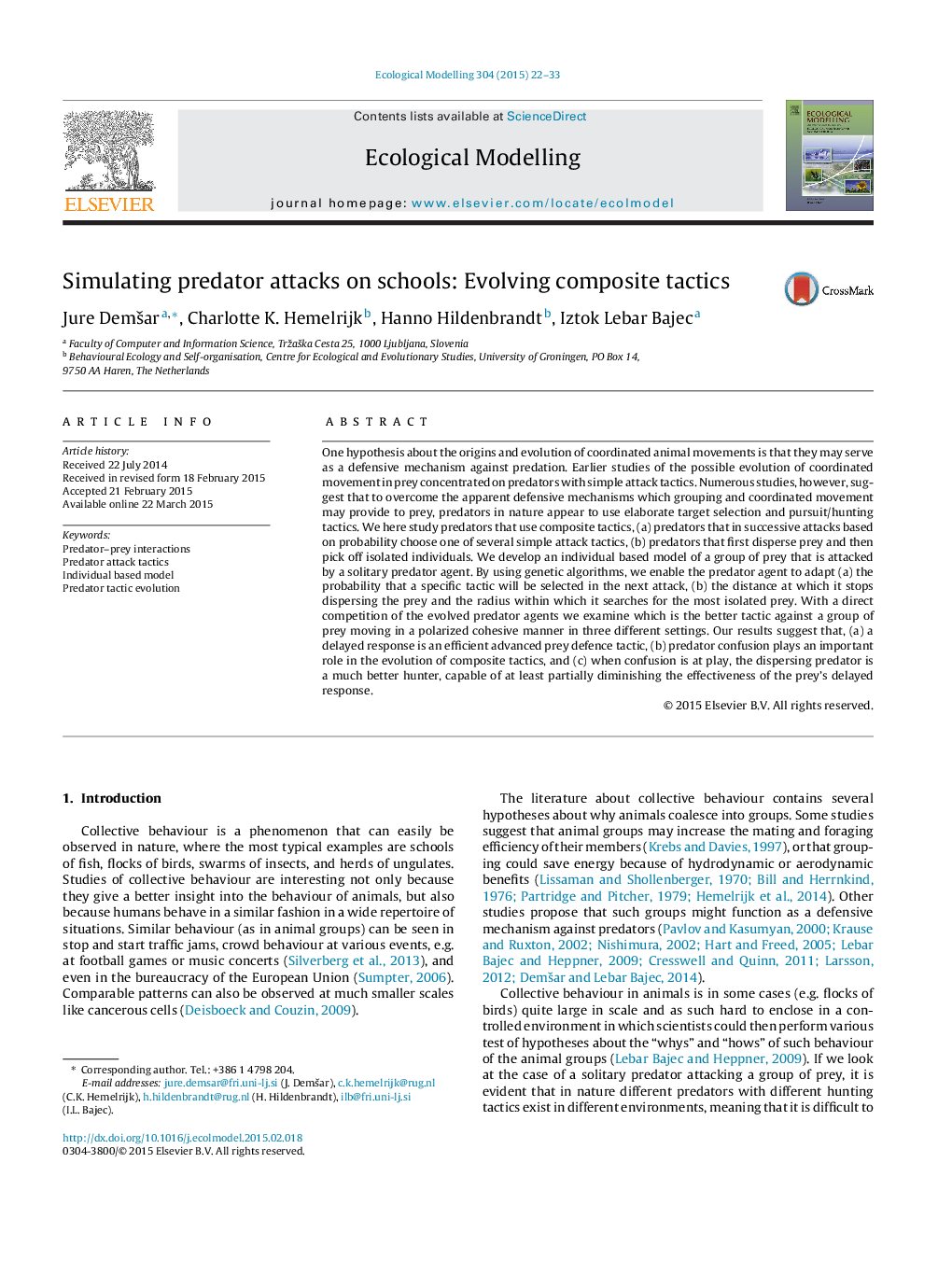| کد مقاله | کد نشریه | سال انتشار | مقاله انگلیسی | نسخه تمام متن |
|---|---|---|---|---|
| 4375753 | 1617442 | 2015 | 12 صفحه PDF | دانلود رایگان |
• The prey group in our individual based model moved in a polarized cohesive manner.
• The predator was able to adapt its attack tactic in order to increase its hunting success.
• Dispersing the group of prey greatly increased the success rate of the predator.
• Staying in polarized groups is probably beneficial for the survivability of prey.
• Confusion might play an important role in the evolution of composite hunting tactics.
One hypothesis about the origins and evolution of coordinated animal movements is that they may serve as a defensive mechanism against predation. Earlier studies of the possible evolution of coordinated movement in prey concentrated on predators with simple attack tactics. Numerous studies, however, suggest that to overcome the apparent defensive mechanisms which grouping and coordinated movement may provide to prey, predators in nature appear to use elaborate target selection and pursuit/hunting tactics. We here study predators that use composite tactics, (a) predators that in successive attacks based on probability choose one of several simple attack tactics, (b) predators that first disperse prey and then pick off isolated individuals. We develop an individual based model of a group of prey that is attacked by a solitary predator agent. By using genetic algorithms, we enable the predator agent to adapt (a) the probability that a specific tactic will be selected in the next attack, (b) the distance at which it stops dispersing the prey and the radius within which it searches for the most isolated prey. With a direct competition of the evolved predator agents we examine which is the better tactic against a group of prey moving in a polarized cohesive manner in three different settings. Our results suggest that, (a) a delayed response is an efficient advanced prey defence tactic, (b) predator confusion plays an important role in the evolution of composite tactics, and (c) when confusion is at play, the dispersing predator is a much better hunter, capable of at least partially diminishing the effectiveness of the prey's delayed response.
Figure optionsDownload as PowerPoint slide
Journal: Ecological Modelling - Volume 304, 24 May 2015, Pages 22–33
